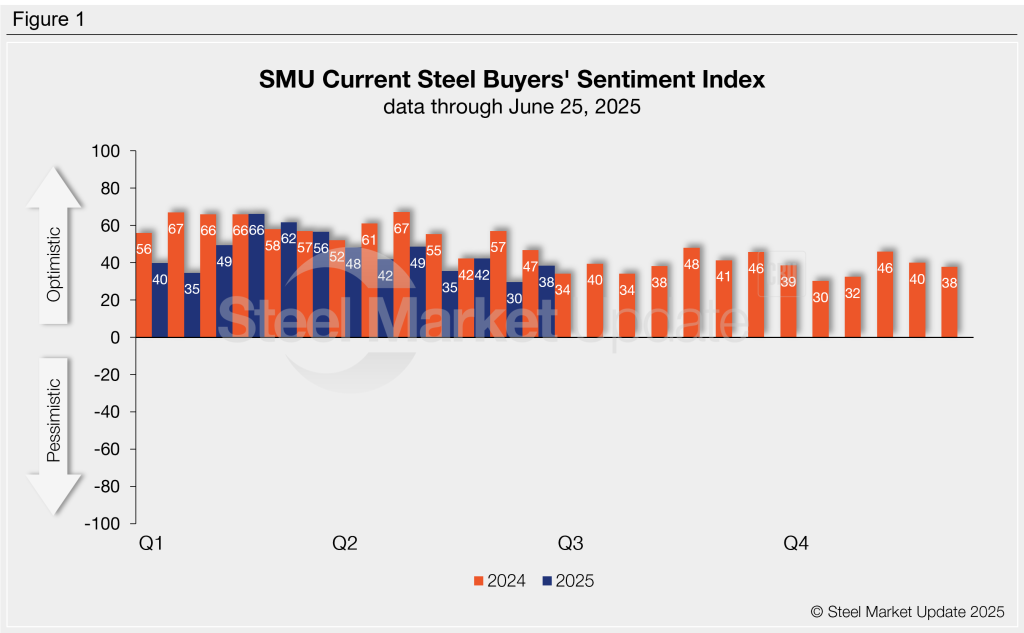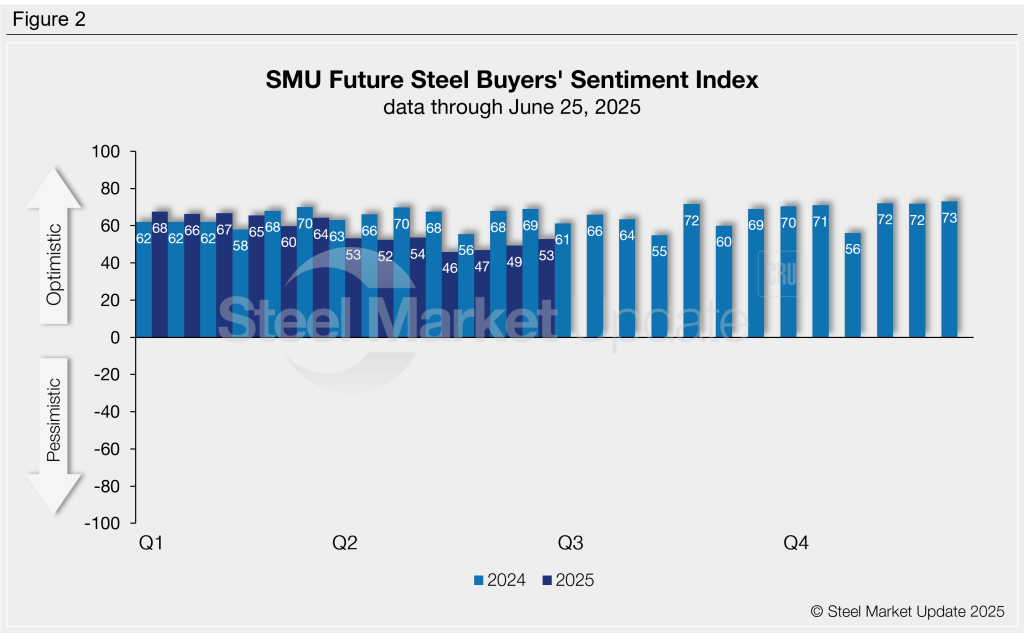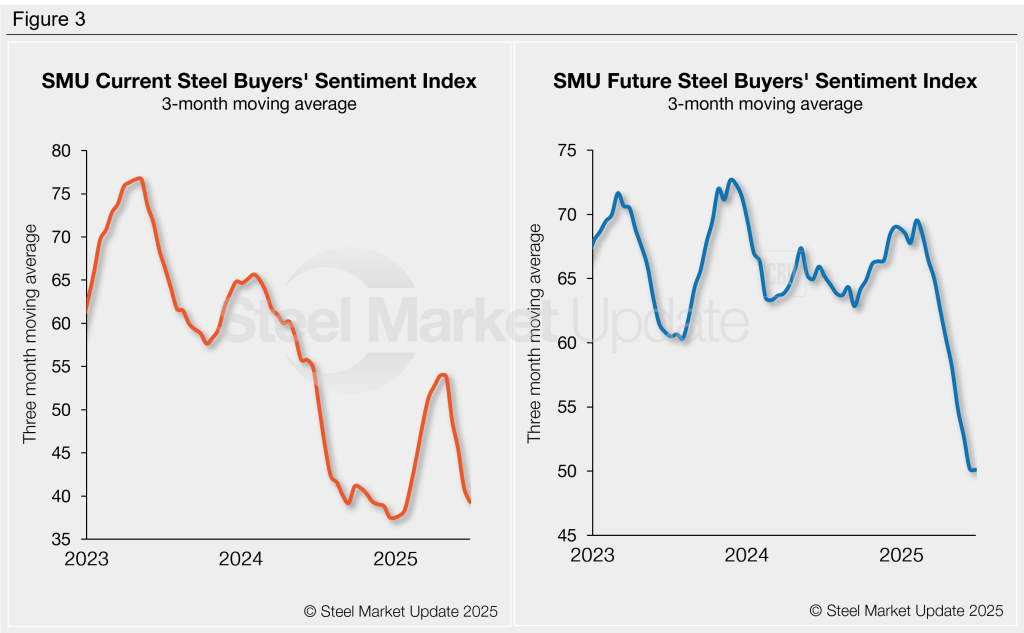Market Data

June 27, 2025
SMU Survey: Buyers' Sentiment rebounds from multi-year low
Written by Brett Linton
Both of SMU’s Steel Buyers’ Sentiment Indices edged higher this week. Current Sentiment rebounded from a near five-year low, while Future Sentiment rose to a two-month high. Both indices show that buyers remain optimistic about their company’s prospects, though not as strongly as they felt back in February and March.
Every other week, we survey thousands of steel industry executives asking them to rate their company’s chances of success today and three to six months in the future. We use this data to calculate our Current and Future Steel Buyers’ Sentiment Indices, metrics we have tracked since 2008.
Current Sentiment
SMU’s Current Buyers’ Sentiment Index increased eight points this week to +38, recovering from the lowest reading seen since June 2020 (Figure 1). Current Sentiment has remained muted since peaking in February, consistently staying at or below year-ago levels since March. For comparison, Current Sentiment averaged +48 throughout 2024 and was at +47 one year ago.

Future Sentiment
Future Sentiment rose four points from mid-June to +53, the highest level seen since late April (Figure 2). This index had recently touched a near-three-year low of +35 in mid-May. Like Current Sentiment, Future Sentiment has generally trended lower in recent months, remaining at or below 2024 levels since March. Future Sentiment averaged +65 in 2024 and was significantly higher this time last year at +69.

What SMU survey respondents had to say:
“[Excellent chance of success as] utility and grid infrastructure manufacturing demands.”
“Business is good, our cost is $160/ton below current spot numbers.”
“Awful due to the 50% Section 232 tariffs.”
“I am concerned we are headed toward a recession or demand destruction if all the tariffs stick.”
“Fair, we are adjusting production as needed.”
Sentiment trends
On a three-month moving average (3MMA) basis, both Sentiment Indices declined for the fifth survey in a row.
This week the Current Sentiment 3MMA fell to a five-month low of +39.34 (Figure 3, left). It had previously trended upward in the first four months of the year to reach a nine-month high of +53.97 in mid-April.
The Future Sentiment 3MMA declined for the 10th-straight survey to +50.11, the lowest measure seen since October 2020 (Figure 3, right).

About the SMU Steel Buyers’ Sentiment Index
The SMU Steel Buyers Sentiment Index measures the attitude of buyers and sellers of flat-rolled steel products in North America. It is a proprietary product developed by Steel Market Update for the North American steel industry. Tracking steel buyers’ sentiment is helpful in predicting their future behavior. A link to our methodology is here. If you would like to participate in our survey, please contact us at info@steelmarketupdate.com.







